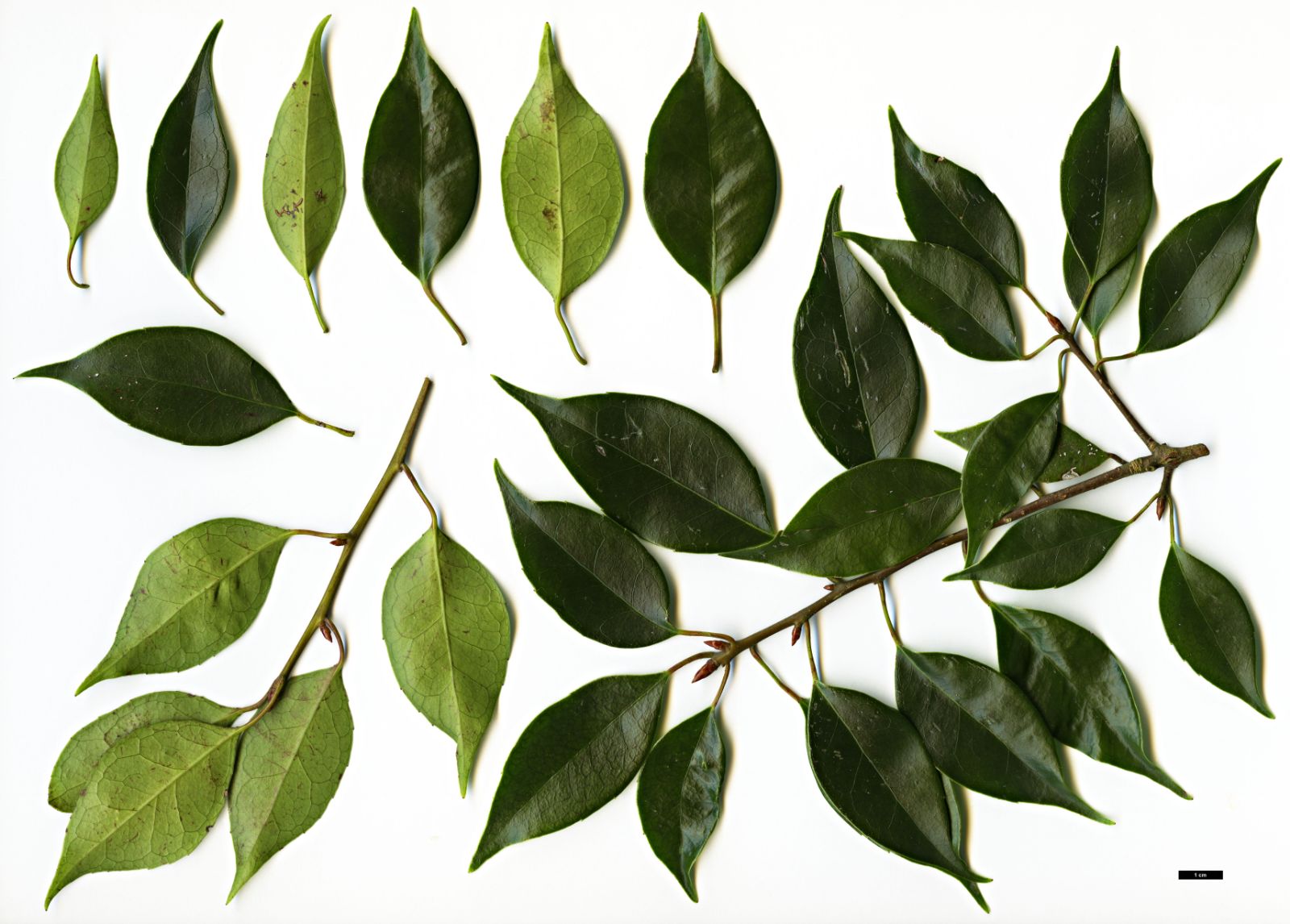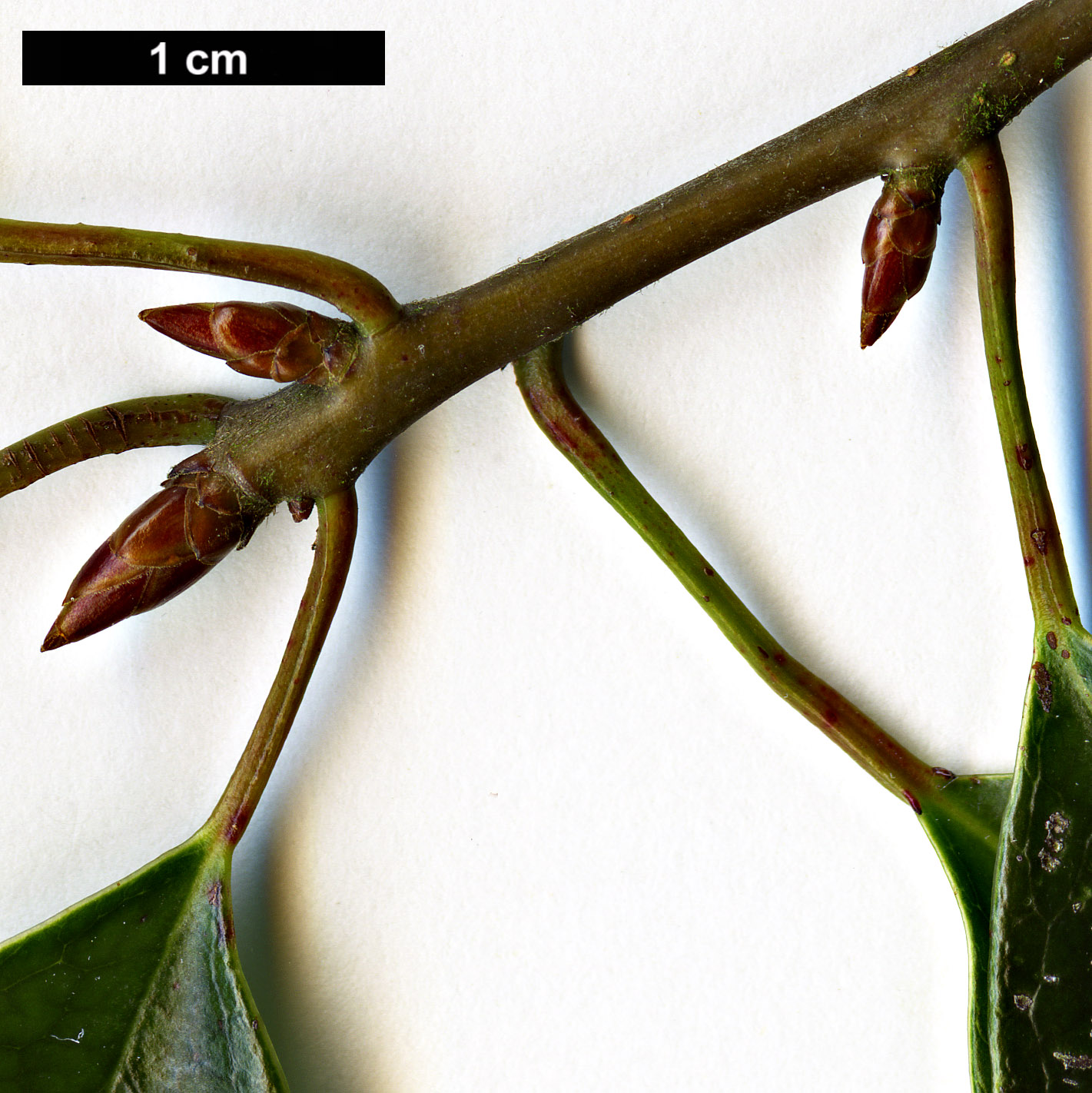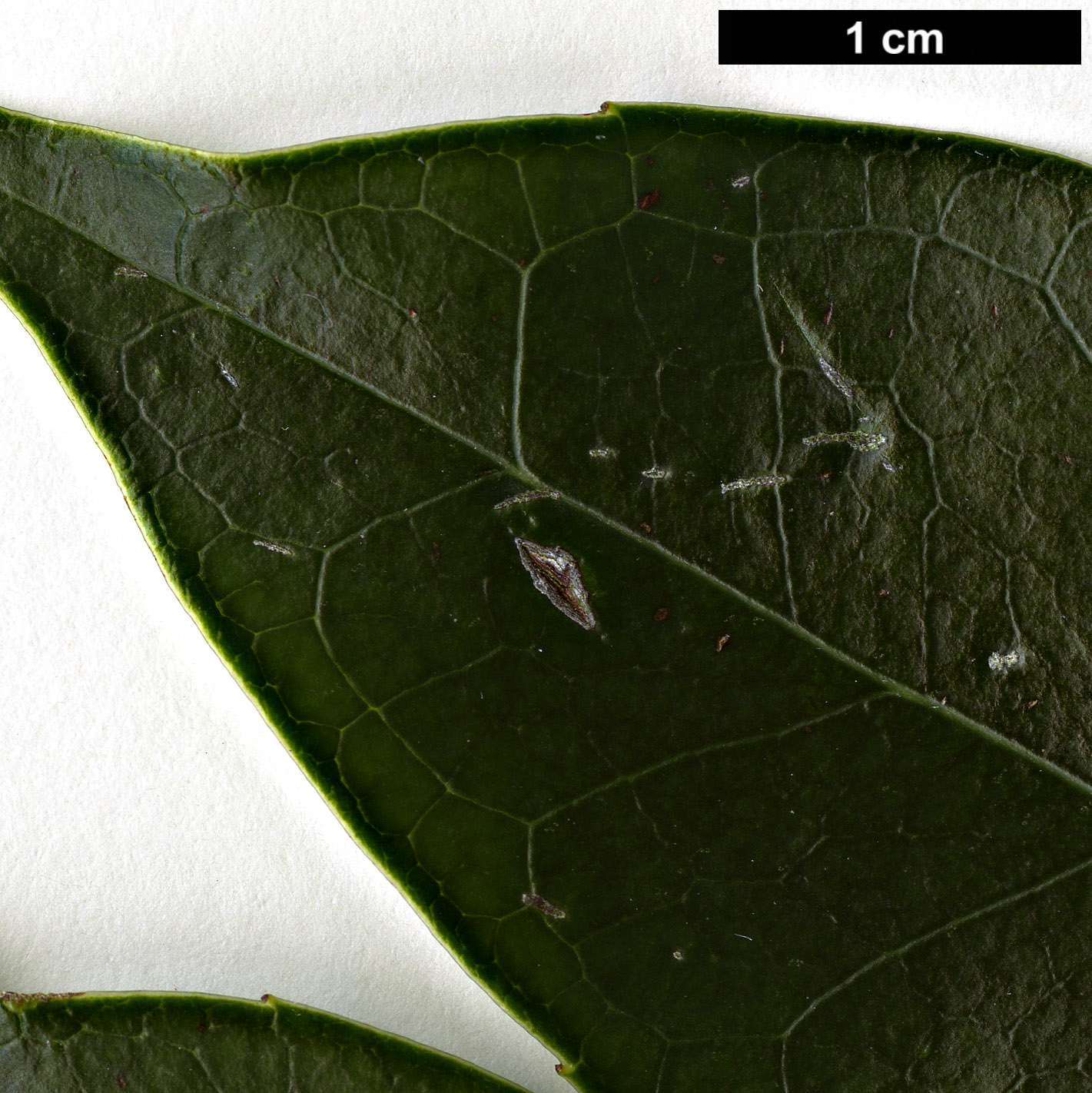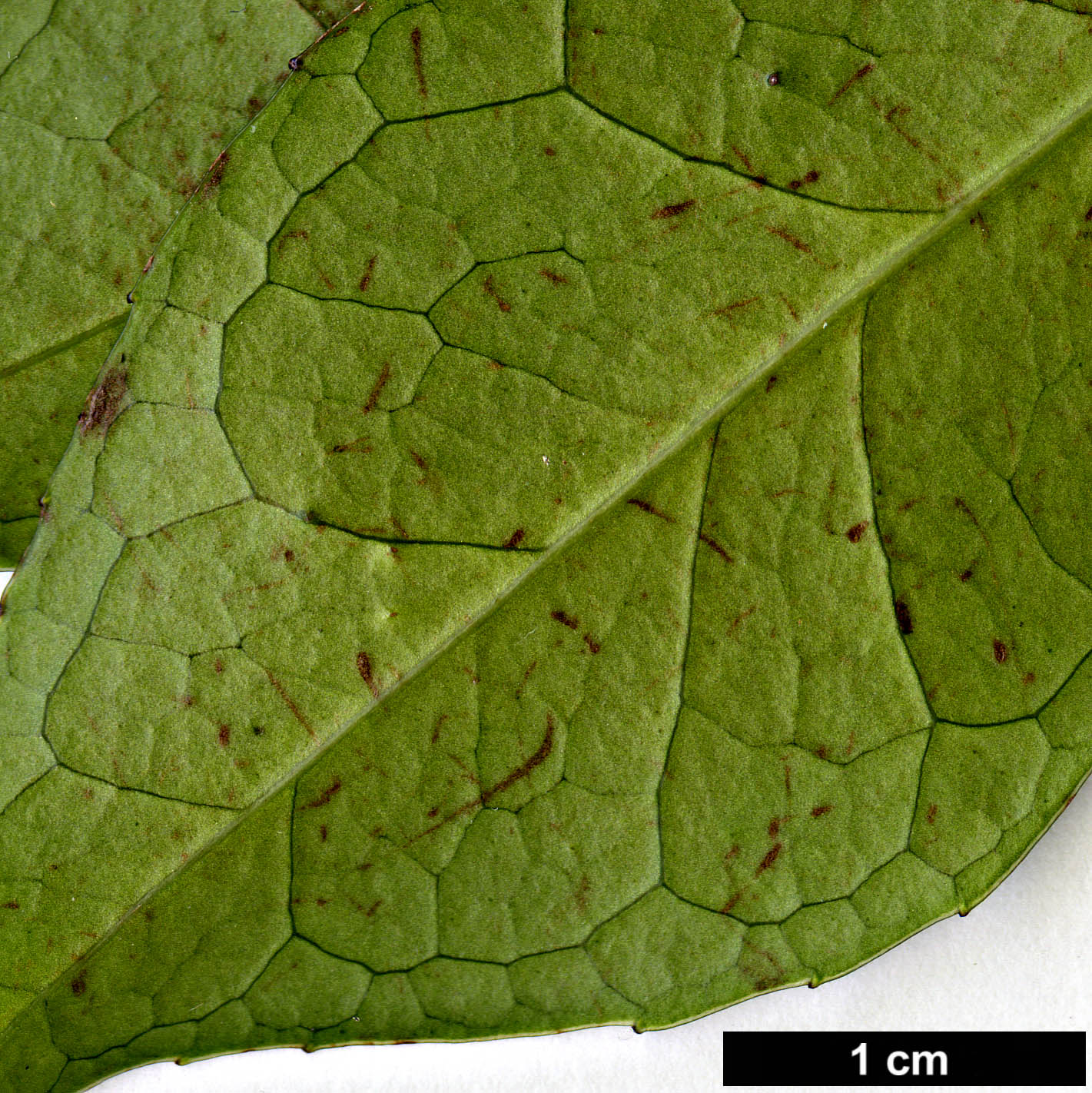Liquidambar gracilipes
Sponsor
Kindly sponsored by a member of the International Dendrology Society.
Credits
Owen Johnson (2021)
Recommended citation
Johnson, O. (2021), 'Liquidambar gracilipes' from the website Trees and Shrubs Online (treesandshrubsonline.
Genus
Synonyms
- Altingia gracilipes Hemsl.
- Altingia gracilipes var. serrulata Tutch.
Evergreen tree to 20 m tall; shoots grey brown, glabrescent. Buds reddish, long-pointed, c. 10 mm. Petiole slender, 1–3 cm, glabrous. Leaf ovate-lanceolate, 4–7 × 1.5–2.5 cm, rounded at the base and with long slender tip; leathery, shiny and glabrous; plane, with inconspicuous veins; flushing pale bronze and maturing to a dark green, with greyish undersides; usually hanging; usually entire. Male inflorescence globose, 5–6 mm wide, usually with several arranged in a panicle; anthers bright magenta red; bracts 4 or 5, ovate-lanceolate, c. 8 mm, brown-pubescent. Female inflorescence solitary or racemose, with 5–6 flowers; peduncle slender, erect, pubescent, 2–3 cm. Seed head obconical, 1.5–2 cm wide, with a cuneate base. (Zhang, Zhang & Endress 2003).
Distribution China Fujian, E Guangdong, Hainan, S Zhejiang
Habitat Evergreen forests, 400–1000 m asl.
USDA Hardiness Zone 9
RHS Hardiness Rating H3
Conservation status Not evaluated (NE)
With its thick, glossy, evergreen, lanceolate leaves, which are untoothed and have long drip-tips to shed tropical rain, this tree is likely to get filed away in the back of a dendrologist’s mind with hundreds of remarkably similar-looking but unrelated ‘laurels’ from the rich forests of southern China, rather than with its temperate cousins. Like most of these evergreens, it is an elegant tree if not a showy one; the male flowers, held in erect panicles and with brilliant magenta crimson stamens, are certainly attractive, as is the small seed head, held erect above the foliage on the long, slender stalk that is commemorated in the specific name.
Liquidambar gracilipes was offered for sale in the United Kingdom by Pan-Global Plants around 2006 (Royal Horticultural Society 2006) (as Altingia gracilipes) but was never very likely to be successful outdoors in this country. It is likely to succeed better in the American Deep South.
Like the deciduous Liquidambar species, the bark is tapped in China, and the resin is used in medicine and perfumery (Zhang, Zhang & Endress 2003).





